Gibbs Reflective Exercise: Applying NMBA Standards in Nursing Practice
VerifiedAdded on 2023/06/04
|6
|1583
|99
Homework Assignment
AI Summary
This document presents a student's Gibbs Reflective Exercise, applying the Gibbs cycle to two critical incidents encountered during a surgical ward placement. The first incident involves a doctor's breach of hand hygiene protocol, prompting reflection on the importance of assertive communication and patient safety. The second incident focuses on a patient with a sacral pressure sore and the challenges of professional collaboration, particularly with care assistants, highlighting the need for effective assessment and communication to improve patient outcomes. The student analyzes these experiences, referencing relevant literature, and formulates action plans to enhance future practice, emphasizing the importance of upholding NMBA standards, promoting patient well-being, and fostering collaborative healthcare environments. The reflections cover areas such as hand hygiene, patient assessment, professional collaboration, and the application of nursing frameworks to improve patient care.
1 out of 6
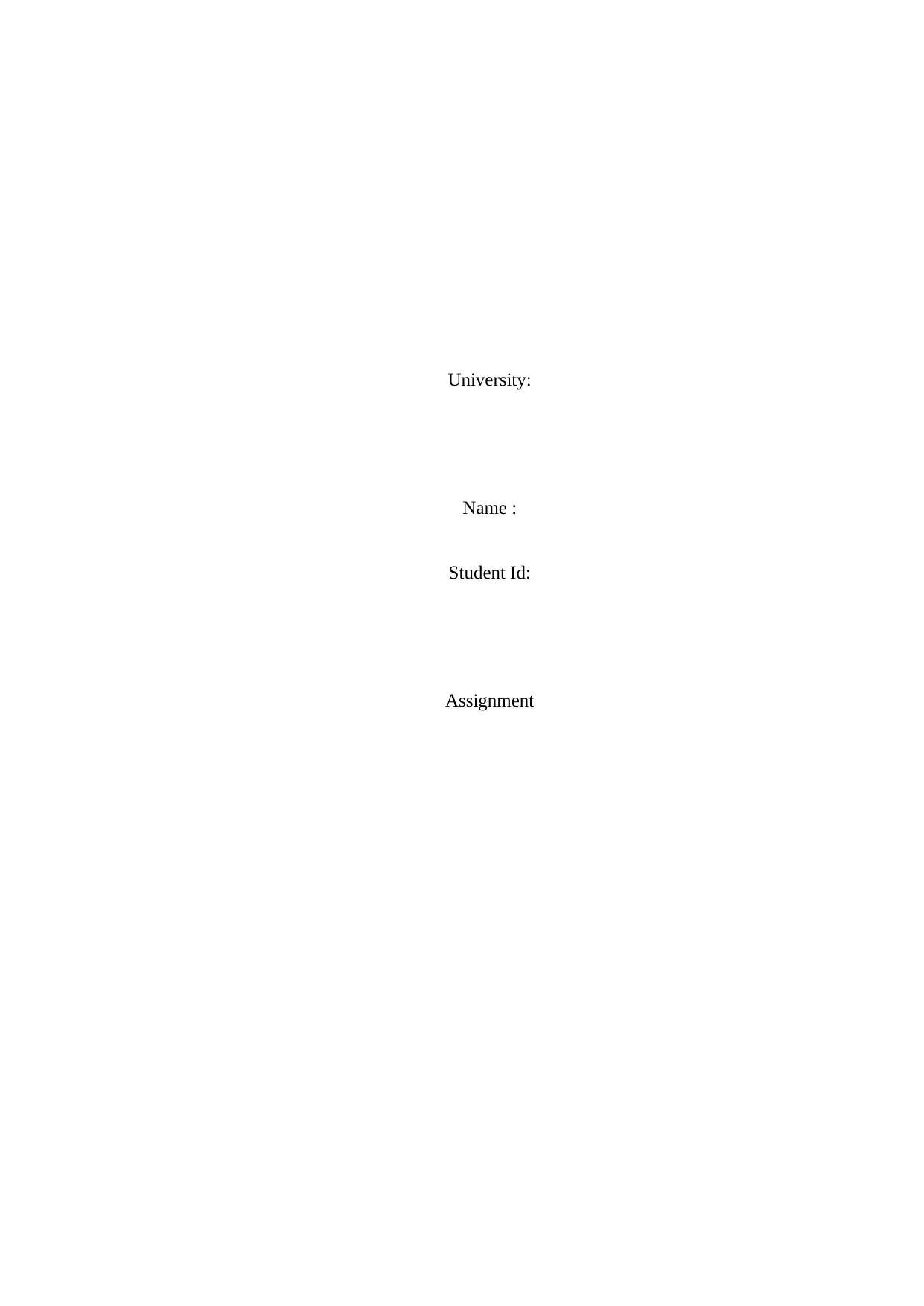
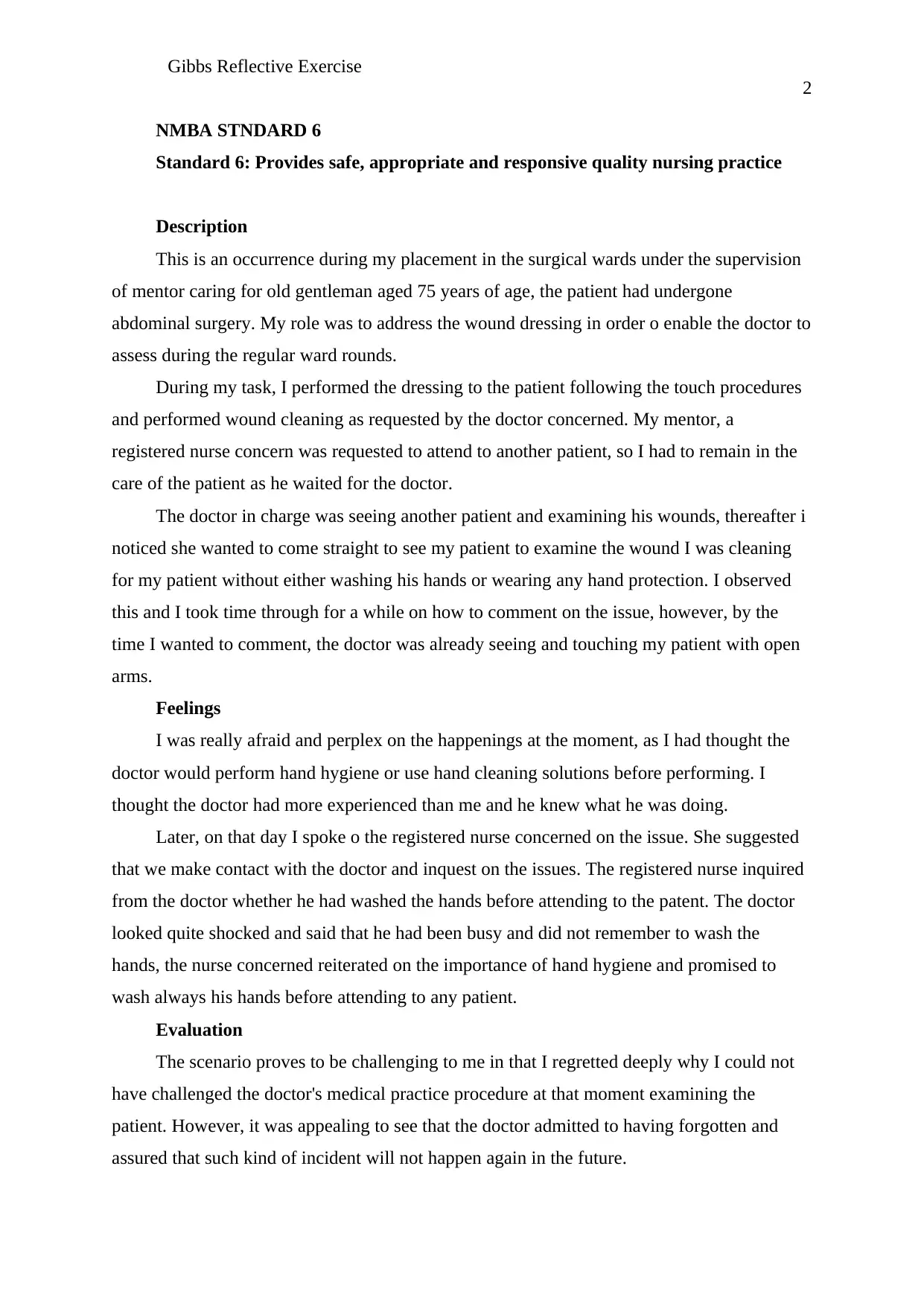
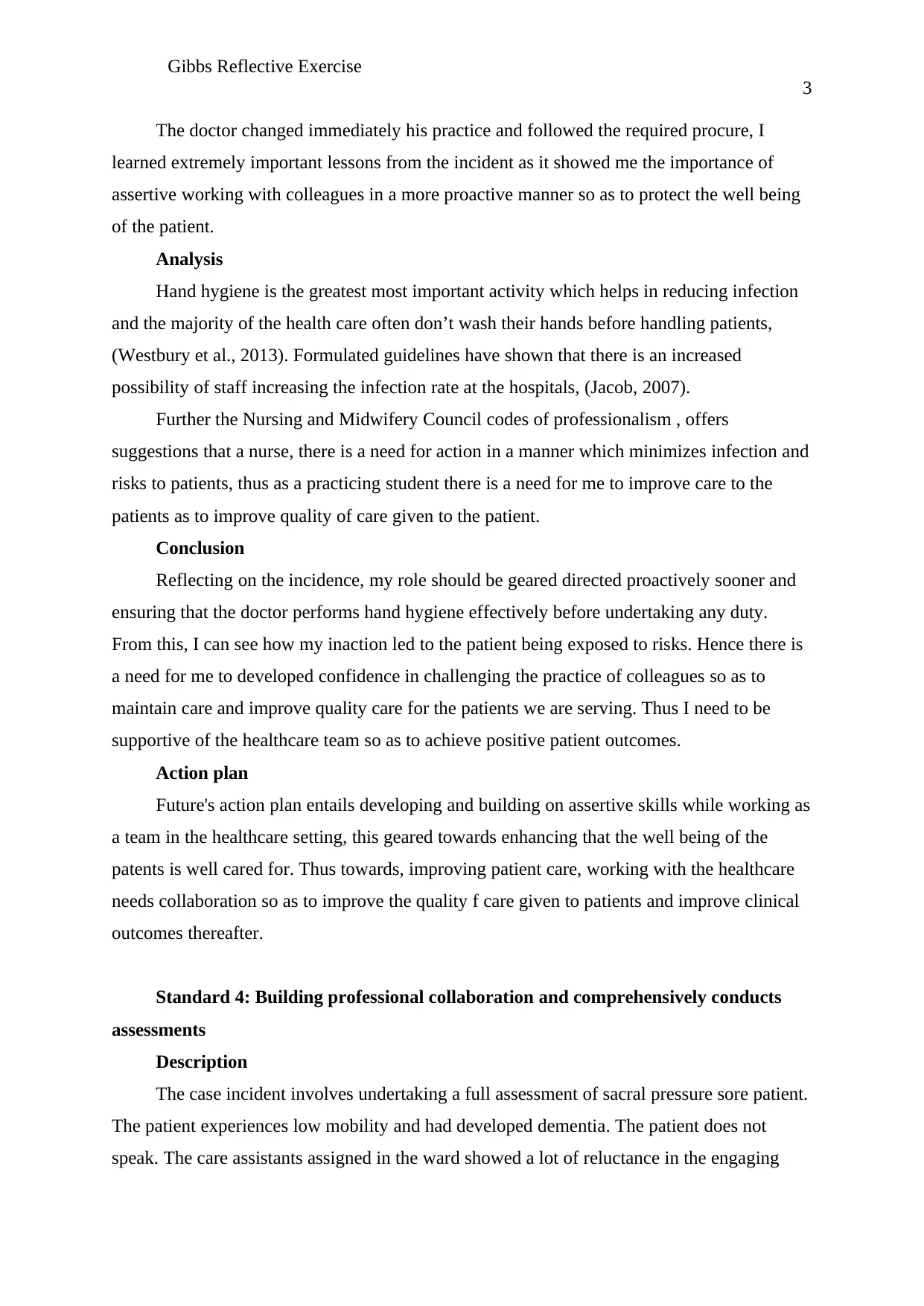
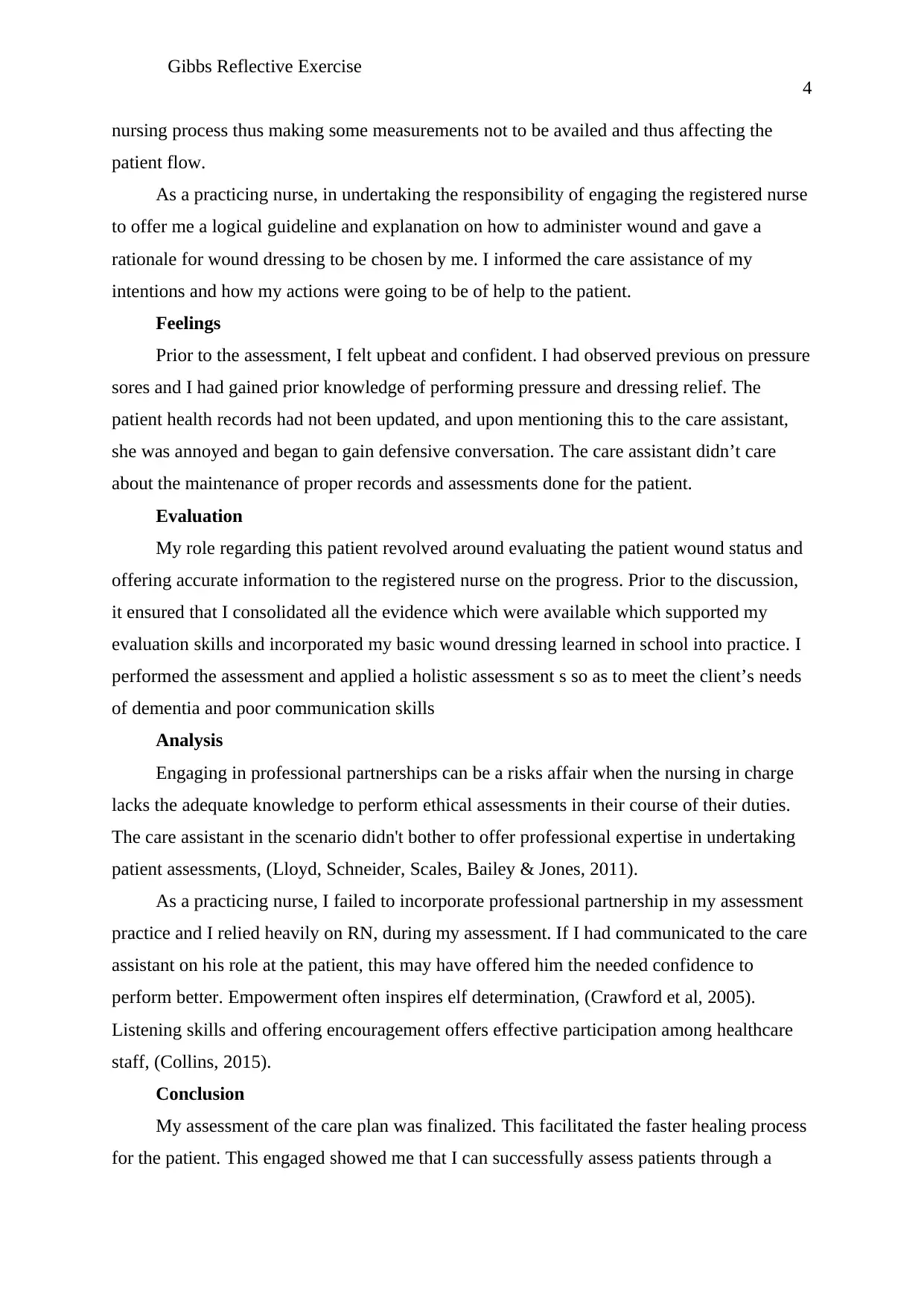
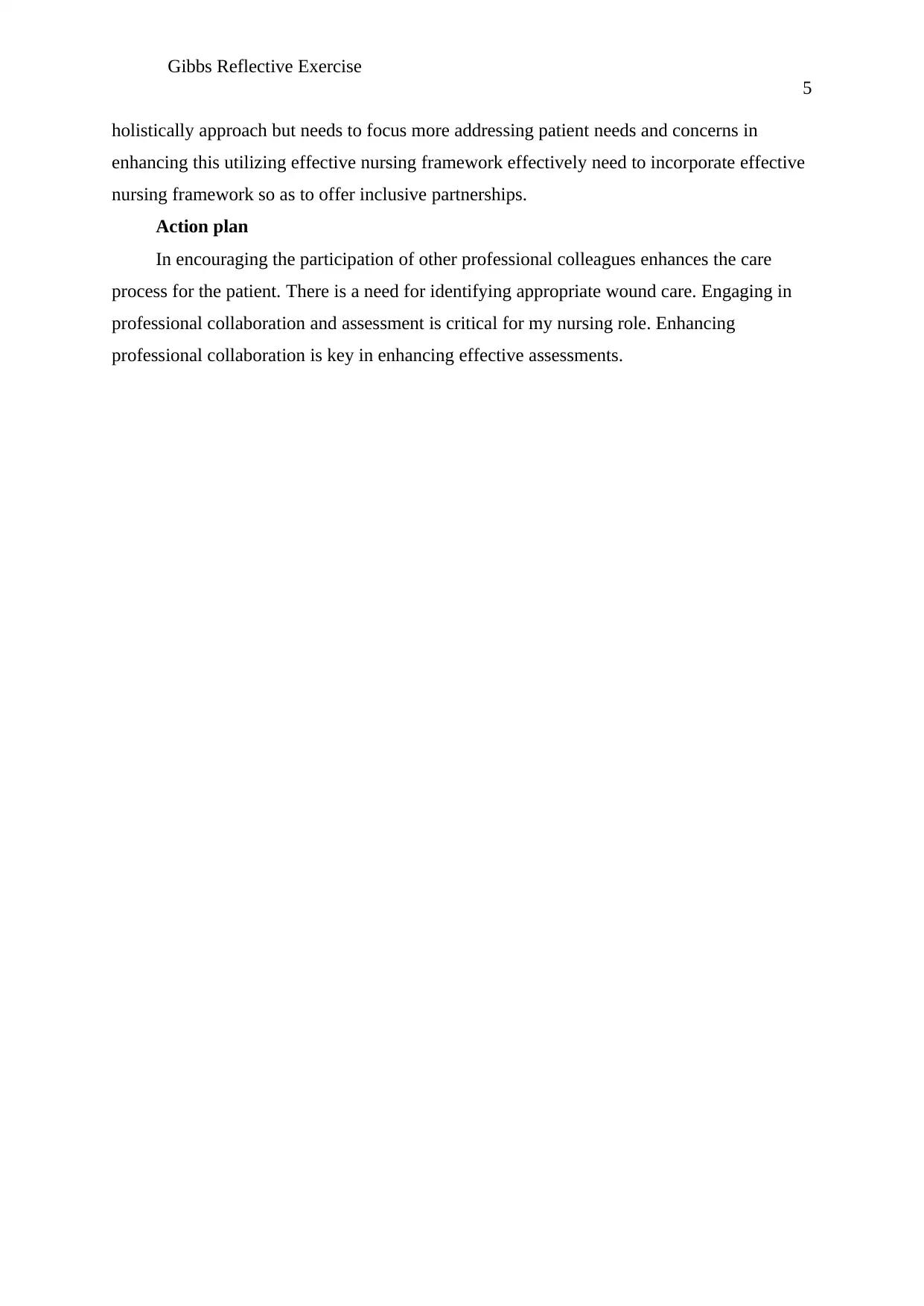
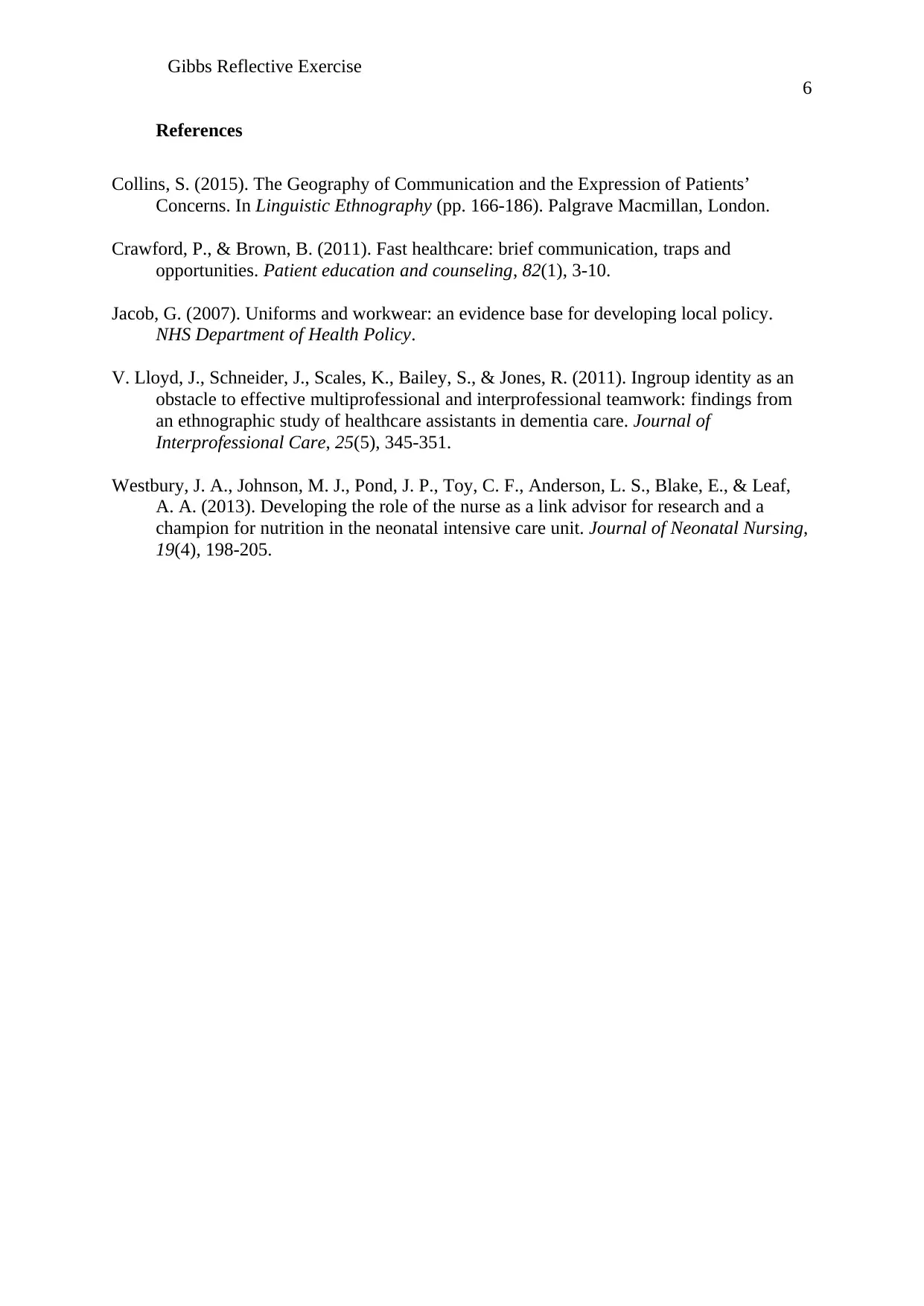






![[object Object]](/_next/static/media/star-bottom.7253800d.svg)